Satellite showed how algae are taking over the planet (8 photos)
Researchers who have been conducting experiments since 2003 using satellite imagery, calculating the area of the ocean covered by flowering algae found that the total area affected by the growth phytoplankton increased during this time by 13.2%. According to scientists, this the result of an increase in ocean surface temperature and runoff into it fertilizers and wastewater. 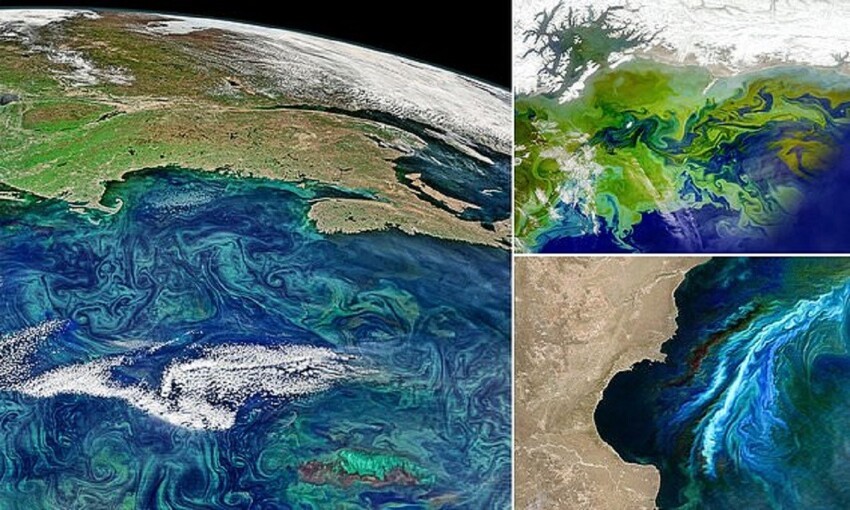

Study conducted by scientists from Southern University science and technology in China showed that the total area affected growth of phytoplankton has increased by 13.2% since 2003. Satellite the pictures showed that the invader algae are now growing at least on 31.47 million square kilometers of ocean surface - and all thanks to human activity.
When algae nutrients from fertilizers, sewage, polluted air and livestock manure are water sources, phytoplankton begins to feed on these substances and grow, scientists explain. 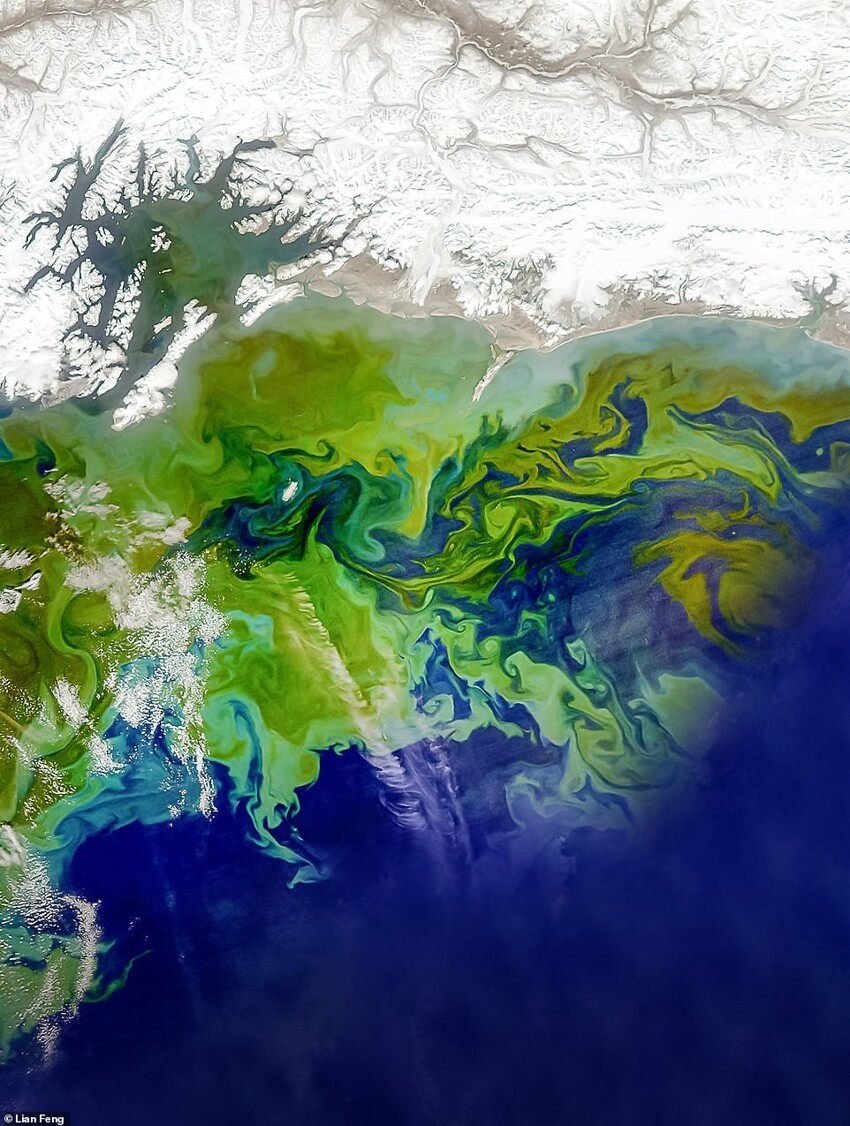
The researchers also found that over the past two decades, rising sea temperatures have increased the frequency of blooms algae, as warmer waters increase the duration flowering season.
“The blooms of many algae are beneficial because they fix carbon at the base of the food chain and support fisheries and ecosystems around the world. However, the reproduction of algae, which cause harm, called harmful algal blooms, has become a serious environmental problem for the entire planet,” the scientists said. 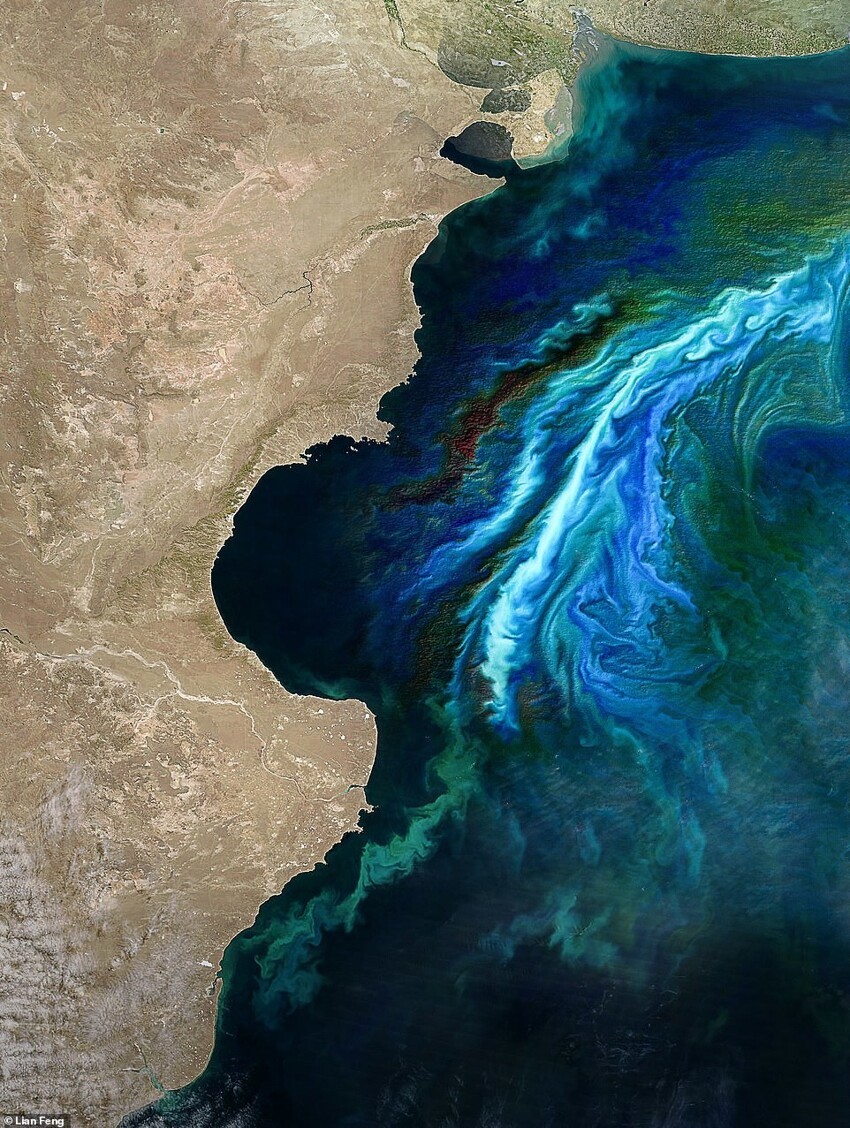
Algal blooms lead to rapid population growth algae in the water system. It can occur both in freshwater, as well as in the marine environment. 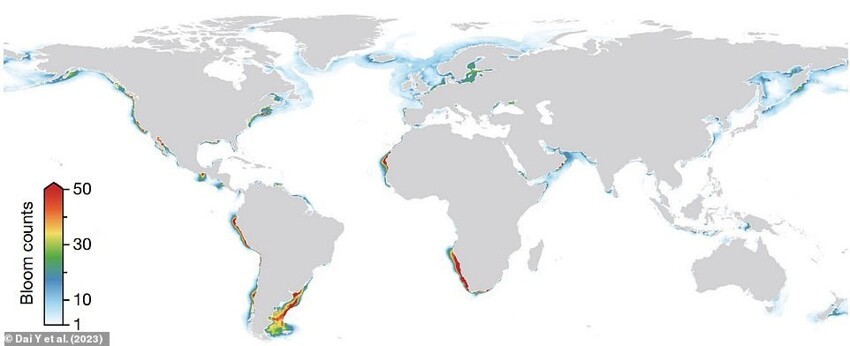
Blooms can cause discoloration of the water at the level surface, turning it yellow, red or bright green, as seen in new satellite images. It is often the result of eutrophication, when water bodies are enriched with nutrients such as phosphates and nitrates, which serve as food for algae and other green plants, ensuring their growth.
Phytoplankton becomes harmful when it consumes all oxygen dissolved in water, which leads to suffocation of fish and aquatic insects, which, in turn, themselves become sources nutrients for algae. Some types of algae also produce biotoxins that can have a serious effect on wildlife and contribute to the formation of "dead zones" in which no aquatic organisms can survive.
For the study, scientists used 760,000 images, taken by NASA satellites from 2003 to 2020 to calculate the area of the world's oceans, annually covered with algae, and the frequency of flowering. They then compared this data with sea surface temperatures as well as how much temperature changes with distance, or "spatial temperature gradient". Large temperature difference between two adjacent areas of the ocean or a large spatial temperature gradient may indicate poor water circulation. This This is because hotter water has a lower density than hotter water. cold, and reduces the rate of immersion of matter during natural the movement of currents. As a result, nutrients are less evenly are distributed in the water column, and phytoplankton can grow in their places high concentrations tend to be closer to the surface.
Large differences in temperature between adjacent areas oceans can also cause turbulence and carry more nutrients substances from deeper waters, which further stimulates the growth algae. The images showed that coastal phytoplankton blooms Observation time increased by 3.97 million square kilometers. IN In 2020, they covered 8.6% of the total area of the World Ocean. 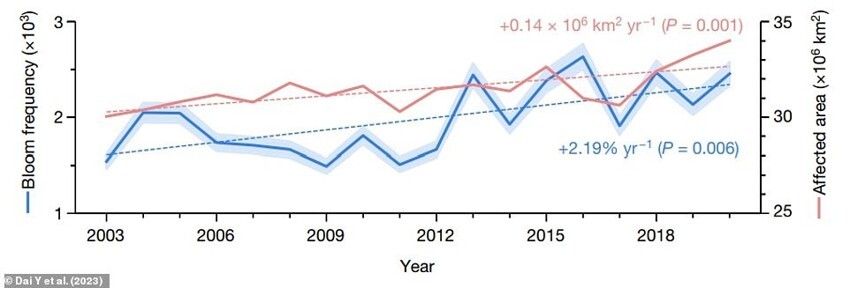
The researchers also found that the average annual observed flowers increased by 59.2% between 2003 and 2020, which is equivalent to 2.19% per year. This is an increase in the frequency of flowering in highly correlated with ocean temperature, which allows suggest that favorable seasons for blooming in temperate seas climate became longer due to higher temperatures, say andinvestigators. Flowering frequency also increased with spatial temperature gradient in many areas, including California, the Persian Gulf and the Canary Current. This suggests that weak ocean currents caused by rising sea temperatures, promote the growth of algae.
In China, Iran, Vietnam, and the Philippines, researchers are also noted an increase in fertilizer use over the study period, which probably contributed to the growth of phytoplankton.
The same can be said about the intensification of aquaculture in Finland, China, Algeria, Guinea, Vietnam, Argentina and Uruguay. 
Researchers hope their data will help better understand mechanisms that cause and disperse coastal blooms phytoplankton. This can help the leaders of the countries of the world to be more realistic assess the risks of harmful algal blooms and decide on strategies to help reduce their occurrence. 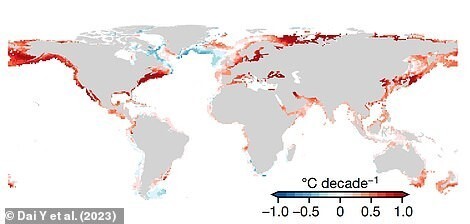
“Many algae blooms are useful, especially from the point of view in terms of their positive impact on ecosystems, as well as on wild and farming, the authors write. - The results of our study can also contribute to the policy and management of environmental programs to promote the growth of beneficial algae."






























